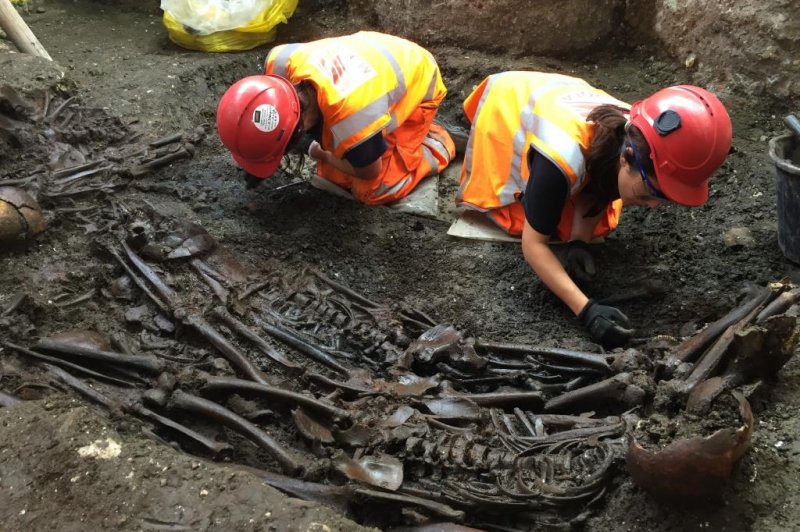1 of 4 | Archaeologists found 30 skeletons in a mass grave, all of which appear to have died of the bubonic plague in 1665 in London. Thousands of people in the city died of the plague in the 17th century. Photo courtesy Crossrails
LONDON, Aug. 12 (UPI) -- Archaeologists at a railway tunnel excavation in London discovered what appears to be a mass grave of 30 victims of the plague, which killed thousands in the city in the 17th century.
The discovery was made at the Bedlam burial ground at the Crossrail tunnel site at Liverpool Street. Archaeologists have been working at the site since March, when it was determined some 3,000 victims of the bubonic plague were buried there.
What they didn't expect to find was a mass grave.
"This mass burial, so different to the other individual burials found in the Bedlam cemetery, is very likely a reaction to a catastrophic event," said Jay Carver, lead archaeologist. "Only closer analysis will tell if this is a plague pit from The Great Plague in 1665, but we hope this gruesome but exciting find will tell us more about the one of London's most notorious killers."
A news release from the Crossrail project said archaeologists found a headstone marked 1665 near the grave, in which all the victims appear to have been buried on the same day.
Scientists from the Museum of London Archaeology will test the remains to determine if the victims died of the plague or some other disease.
"The concentration of burials in this pit provides a new focus for scientific testing and study," Mike Henderson, senior osteologist from MOLA, said. "We hope detailed osteological analysis will help determine whether these people were exposed to The Great Plague and potentially learn more about the evolution of this deadly disease."
The Bedlam burial ground was in use from 1569 to at least 1738 and is estimated to contain the remains of some 30,000 people. So far, archaeologists have uncovered 3,500 skeletons from the site.
Archaeologists from the project released an interactive, 360-degree video from the excavation site so users can get a full view of the project.















